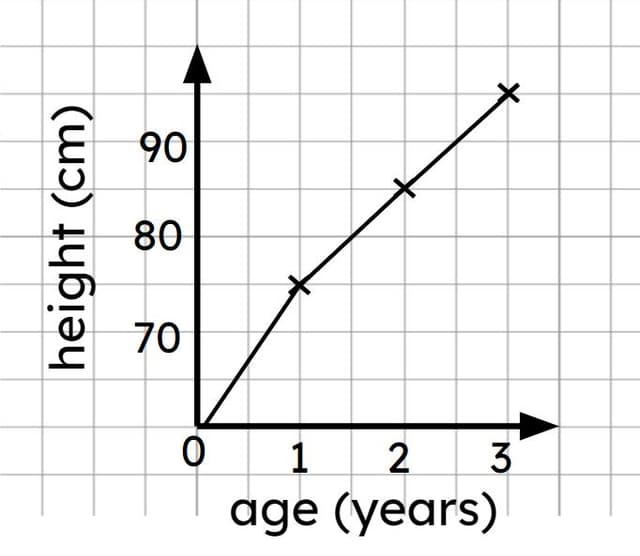Starter quiz
- What is a conclusion?
- an idea about what might happen during an investigation
- a list of steps to carry out an investigation
- a set of results gathered during an investigation
- an explanation of the results from an investigation ✓
-
- Which of these types of diagram is a line graph?
 A ✓
A ✓ B
B C
C
 This type of diagram is called a ______ graph.
This type of diagram is called a ______ graph.- 'bar' ✓
- What do fungi, insects and arachnids all have in common?
- they are all living things ✓
- they are all invertebrates
- they are all animals
- they are all microscopic
-
- Which of these sentences about mould is not correct?
- Mould can reproduce using spores.
- Mould is a type of plant. ✓
- Mould is a living thing.
- Mould grows on organic matter.
-
- What unit of measurement would we use to describe the area of something?
- millilitres (ml)
- grams (g)
- centimetres squared (cm²) ✓
- kilometres (km)
-
Exit quiz
 Why might scientists use a bar or line graph to show their results?
Why might scientists use a bar or line graph to show their results?- to practise their maths skills
- to make their data look more attractive to other people
- to make it easier to analyse and draw conclusions from their data ✓
- to make their data more confusing
-
 Which of these safety precautions should we take when carrying out observations of mouldy food in sealed bags?
Which of these safety precautions should we take when carrying out observations of mouldy food in sealed bags?- Only open the bags of food to make observations.
- Only open the bags of food if we are wearing gloves and goggles.
- Only open the bags of food when we are ready to throw them away.
- Never open the bags containing food. ✓
-
- Mould, mushrooms and yeast belong to a group of micro-organisms called ______.
- 'fungi' ✓
- What are preservatives?
- substances that kill micro-organisms
- substances that can be found inside fungi
- substances that make it harder for mould to grow ✓
- substances that encourage mould growth
-
 Jun is investigating mould growth by leaving sealed bags of bread in different places. In which of these places would the mould grow the slowest?
Jun is investigating mould growth by leaving sealed bags of bread in different places. In which of these places would the mould grow the slowest?- in a sunny spot on a windowsill
- on a shelf above a radiator
- outside in frosty weather ✓
- on the teacher’s desk
-
 Which of these actions could slow down the growth of mould?
Which of these actions could slow down the growth of mould?- adding preservatives ✓
- adding moisture
- keeping in a sealed bag ✓
- keeping in a fridge ✓
- keeping in a warm place
-
Worksheet
Loading worksheet ...
Presentation
Loading presentation ...
Video
Lesson Details
Key learning points
- Mould is a type of fungus and can be grouped with other fungi including yeast, mushrooms, lichens, and truffles.
- Mould can be observed and measured growing on food over time, following strict safety rules.
- Scientists present data in a variety of ways to help them form conclusions.
- Mould growth can be slowed or prevented in different ways, such as dehydration, refrigeration and adding preservatives.
Common misconception
Pupils may not consider mould to be a living thing because it does not move in the ways we are familiar with animals moving.
Remind pupils that all living things grow, reproduce and move, and that mould can do all of these things. It is a type of fungus. Which is a living thing that is part of the micro-organisms group.
Keywords
Mould - Mould is a type of fungi which grows and forms a fuzzy coating on organic matter.
Micro-organism - A micro-organism is a very tiny living thing.
Fungi - Fungi are a type of micro-organism that feed on organic matter.
Conclusion - In a conclusion, scientists explain what the results show or mean.
Data - Data is information collected during an investigation. It may be numbers, symbols, pictures or text.
+